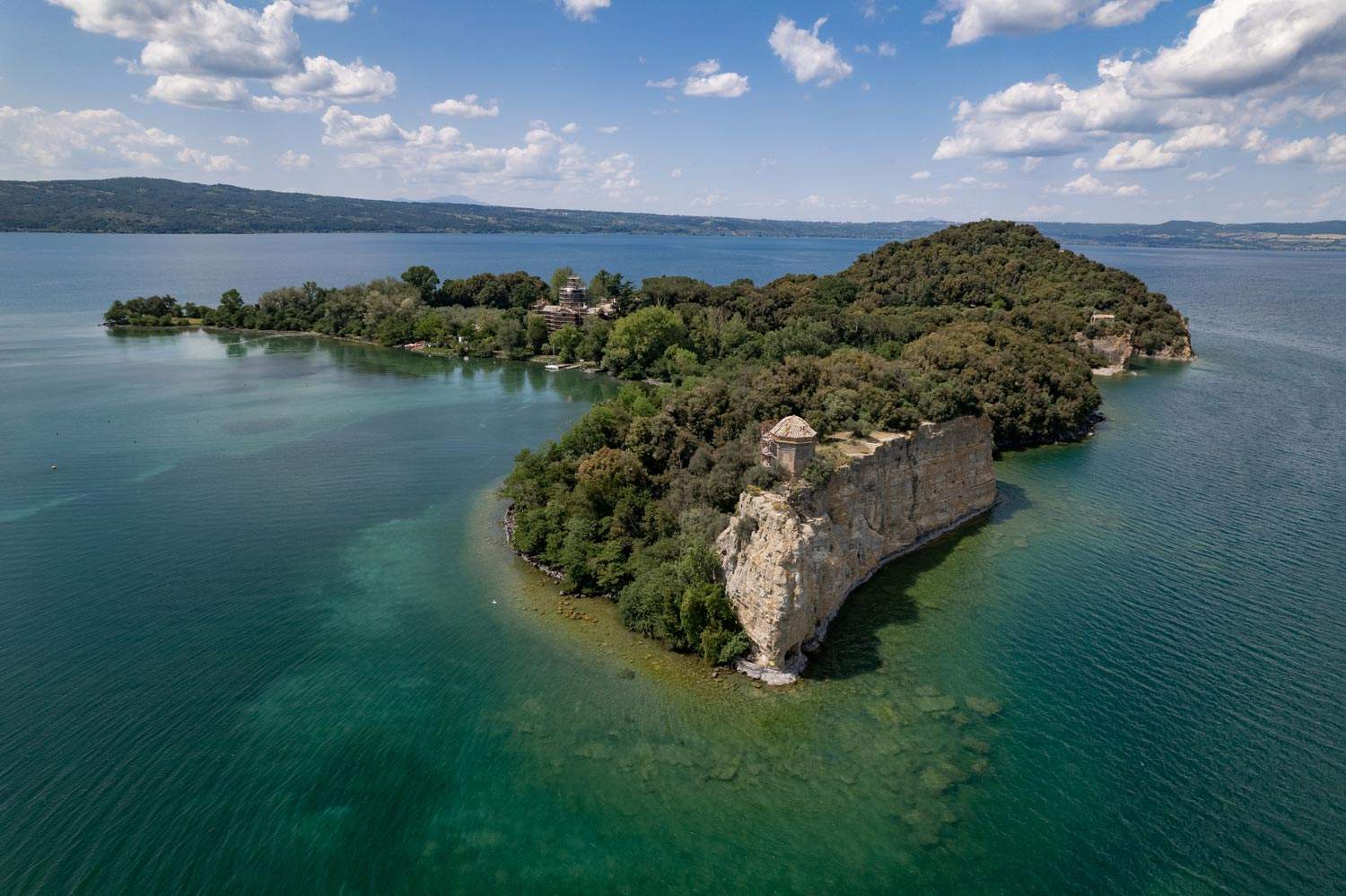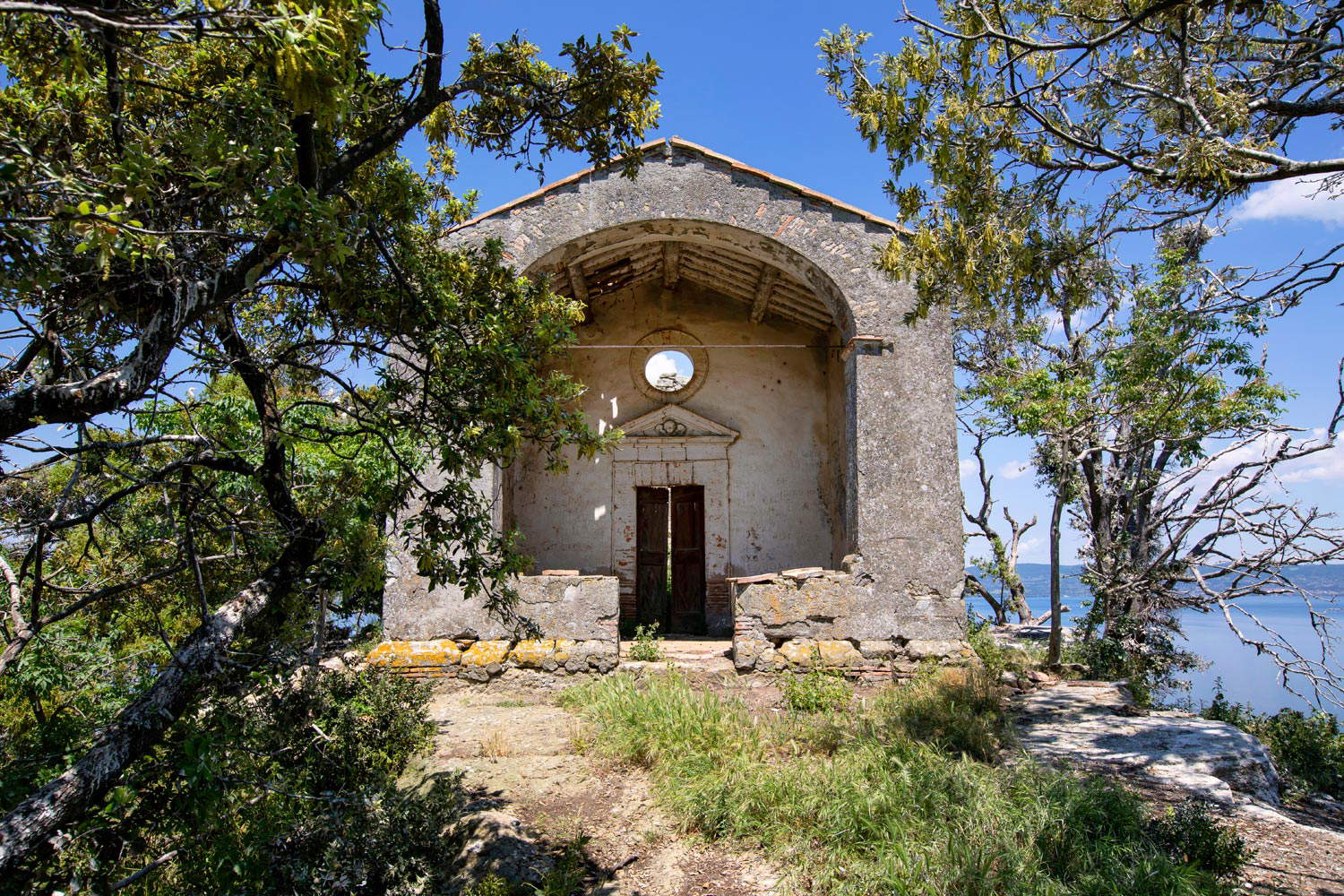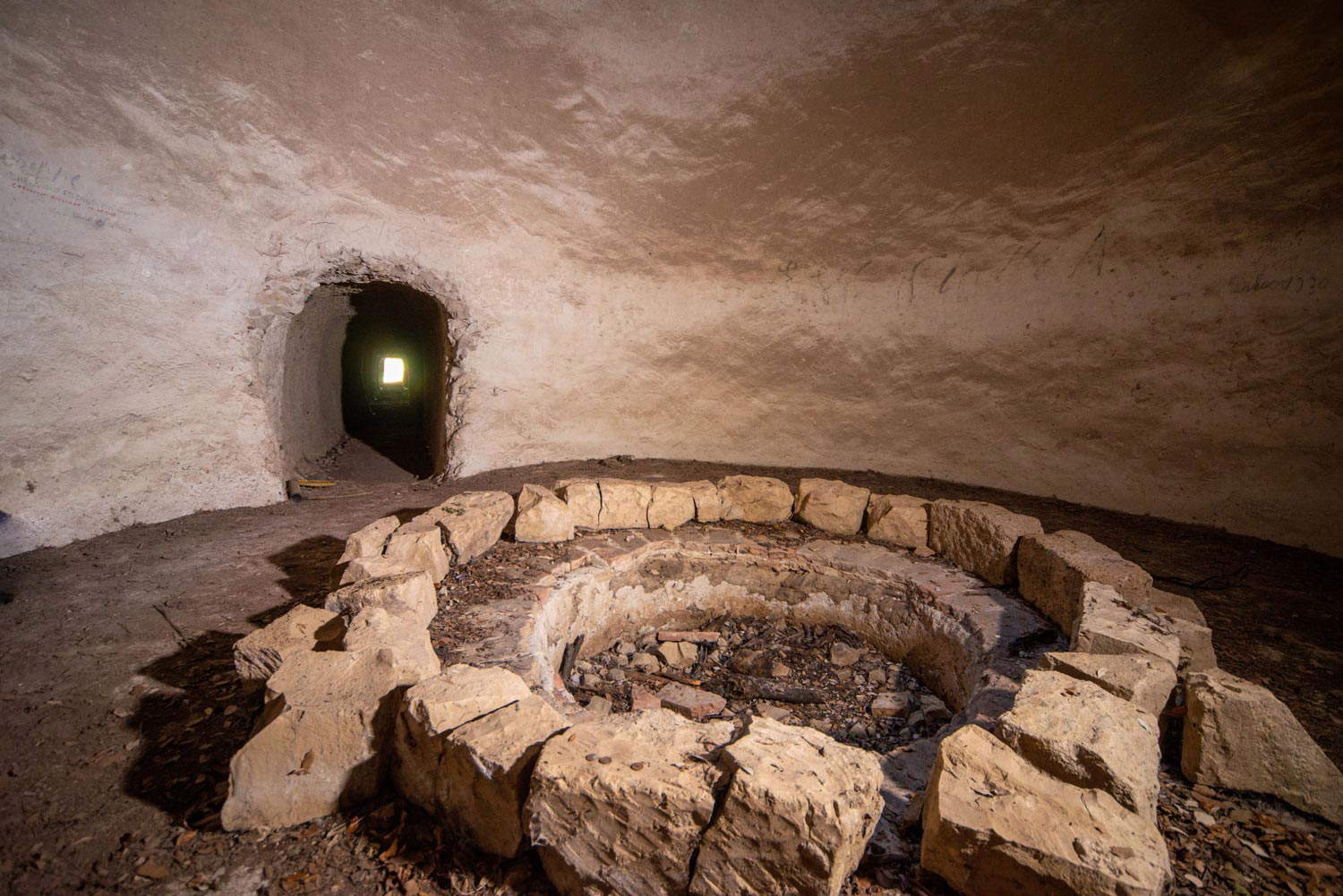Bisentina Island, at 0.17 square kilometers in area, is the larger of the two islands on Lake Bolsena. Administratively part of the municipal territory of Capodimonte, one of the villages overlooking the lake, until recently it was inaccessible: since 2022, however, it has been open to the public (albeit during a limited period of the year, that is, between summer and early fall, and with paid access, the fees for which can be found on the website of the service provider) in order to bring to the public a site suitable for everyone, whether lovers of history, architecture, fans of mysteries and esotericism, as well as, of course, for nature lovers. Bisentina Island can be reached by the Lake Bolsena transport service, with departures from the Bolsena and Capodimonte piers. Visiting at the moment is only possible with organized groups and licensed guided tours. Here are what the sights will be during the visit.
Mount Tabor is the highest point on the island and is so named because of an intentional analogy with the hill of Galilee due to the presence of a chapel that holds a fresco of the Transfiguration. The mountain is covered with forests, where it is not uncommon to come across numerous ancient trees.

Inhabited since the 9th century, when it gave refuge to the people of the Tyrrhenian coast who wanted to take refuge from the raids of Saracen pirates, Bisentina Island became, in the late 14th century, a domain of the Farnese family, and in 1431 Pope Eugene IV granted theisland to the Observant Friars Minor, who built here a church (that of Saints James and Christopher), a bell tower, a convent and numerous chapels, overlooking the lake, according to u mystical and artistic project aimed at creating a kind of Via Crucis on the island. Three of the seven chapels built between the 15th and 16th centuries on the perimeter paths in a devotional route, which was a religious pilgrimage destination close to the Via Francigena, can be visited: the octagonal-plan chapel of St. Catherine attributed to Antonio da Sangallo the Younger set on a 22-meter-high rock spur; the chapel of the Crucifix or Mount Calvary, which preserves precious frescoes attributed to the hand of Benozzo Gozzoli; and finally, the chapel of the Transfiguration on Mount Tabor. The remaining chapels will be made visitable and revealed one by one over time. Towering in the wilderness is the Grand Elder, a 600-plus-year-old holm oak protected by Federico Gori’s site-specific work Il Vello d’Oro (The Golden Fleece ).

The building was commissioned by Alessandro Farnese Juniore to Vignola as an extension of the pre-existing church of San Giovanni Battista, in which at the time Ranuccio Farnese had wanted a mausoleum for the family (in fact, several members of the family were buried here). It was later built by a pupil of Vignola, the Lombard Antonio Garzoni. In the past it also housed paintings by Annibale Carracci. It has been restored to pristine condition through the restoration of the lead dome and facade: currently not open to visitors, the church will in time be made accessible inside.

First opened for the 2023 season (this was a highly anticipated opening), the Malta of the Popes is located under Mount Tabor, the highest point on the island, and is mentioned by Dante in Paradise (Canto IX, vv. 52-54) as a perpetual prison. It is a deep tunnel dug into the tuff at the end of which is a hypogeal chamber of about 6 meters and at the center of which is a well, above which is a circular opening that was used to collect water. That this structure was in Roman times used as a cistern is revealed to us by the waterproof plaster found on the walls of the inner walls, but its origin is probably much older and related to the thermal spring waters flowing beneath it. This would give Malta a newfound sacredness: a large underground womb within which rituals related to birth and fertility were celebrated. Transformed for a long period into a life-long prison for heretics, this chamber was counted in time among the themes of the occult and was the subject of late 19th-century conversation in the theosophical salon of Madame Blavatsky, who considered this place to be one of the secret entrances to the underground realm of Agarthi, “the inaccessible.”

In 2023 present on the island Bisentina two new site-specific projects: Fusing a rock by artist Unurgent Argilla, which portrays the island through a study and transformation of its volcanic rocks. A composition of three round vases, fragments and study boards of excavated materials brings to light the material, geological and sentimental identity of the island. The three vases are displayed near the chapel on Mount Tabor, which contains a fresco attributed to the school of Benozzo Gozzoli and depicts the Transfiguration. If the fresco portrays an intangible state of matter such as light, to complement it the density of matter is represented by these vases made from the earth of the island. Matter here is sacred, as the vases have in them the essence of light. The second site-specific project consists of the sound installation Celestia, composed by maestro Roberto Cacciapaglia, in a special version intended for this fascinating place. The music welcomes the visitor inside the Malta of the Popes, giving it a renewed meaning: from a perpetual prison to a place of rebirth kept in the belly of the earth. The enveloping sound becomes part of the experience of visiting this place. These two works installed at the two extreme poles of Mount Tabor - the summit and the underground - make the mountain itself become a kind of alchemical gateway through which light becomes matter, and matter, light.

 |
| Bisentina Island, what to see on the largest island of Lake Bolsena |
Warning: the translation into English of the original Italian article was created using automatic tools. We undertake to review all articles, but we do not guarantee the total absence of inaccuracies in the translation due to the program. You can find the original by clicking on the ITA button. If you find any mistake,please contact us.